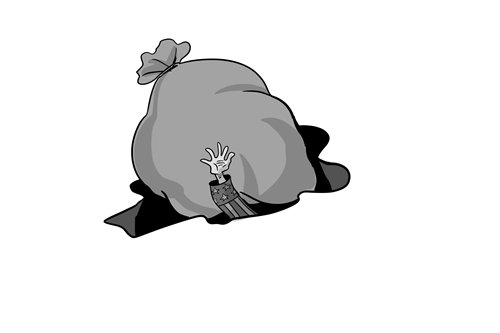
Illustration: Luo Xuan/GT
As the data released by the US Department of Treasury last week showed, the country's total federal debt outstanding has exceeded $22 trillion. The US debt grew more than $1 trillion in the past 11 months.
The piling up of US federal debt can be attributed to four reasons on the economic front.
First, robust economic growth has allowed for debt expansion. Since 2010, the US economy has grown at an average speed of 2.2 percent. Last year, the economic performance was even stronger, with 2.2 percent in the first quarter of 2018, 4.2 percent in the second and 3.4 percent in the third.
Second, Treasury bills serve as an important variable in the monetary policy transmission mechanism. The US Federal Reserve conducted open market operations mostly with Treasury notes and bonds to exert indirect influence on financial markets.
Third, because the international monetary system was built around the US dollar, it is easier for the US to accumulate public debt, especially when those countries with a trade surplus with the US have no choice but to purchase US dollar-denominated assets to maintain the safety of their foreign exchange.
Fourth, the US public debt is an attractive, safe dollar-denominated asset. Treasury bills have liquidity and a stable return, backed by the credit of the US government.
The government has short-term incentives to keep borrowing. Every administration tends to implement policies promised during the campaign by issuing new bonds. Also, to make up the fiscal deficit, the government has to keep borrowing.
After US President Donald Trump entered the White House, the US passed a massive tax overhaul. The government's tax revenue has fallen sharply. Large-scale infrastructure, a growing defense budget and the Fed's interest rate hikes, which have lifted borrowing costs, have all contributed to more government spending. If spending outweighs revenue by too much, the government will have to turn to debt issuance to fill the gap.
In the long run, debt expansion propels favorable policies that stimulate the economy. The fiscal deficit is a persistent problem with a protracted history. Since former president Ronald Regan, US presidents have all adopted expansive fiscal policy. The US government has to borrow new debt to pay back the old, creating rollover risks. The country's low savings and high consumption model has also driven the US to keep large amounts of debt.
The downside of excessive debt has already shown its face.
First, massive public debt has led the US to an economic model of high debt dependence. This model is characterized by high fiscal deficits, high consumption, low savings and more deficit accumulation.
Second, the US government's governance capability will be constrained as well. Due to the debt growth, the government is less capable of using fiscal policy to deal with economic problems.
Third, the budget for some key items and industries will be dispersed. The federal government may cut spending on infrastructure, education and basic research in order to assuage debt repayment pressure amid interest rate hikes.
Fourth, huge debt may cast a shadow on economic development, denting the credit of the US government and US dollar. Therefore, the possibility of a financial crisis will grow and investor confidence will suffer a setback. If the situation is left unchanged, it will likely trigger a financial crisis and US debt crisis.
The US debt has indeed reached a payback crisis. Now the country has generated problems in three areas including tax revenue, expenditures and finance. The federal debt is now more than 100 percent of US GDP. In 2018, the inverted yield curve on Treasury bills, in which the interest rate of 10-year Treasury bonds dropped to 3 percent, caused panic on the market.
In order to relieve debt pressure, the US government will have to conduct tax cuts appropriately. Corporations in priority areas can keep the 15 percent tax rate, while companies in other industries will have to handle some increase in taxes, as long as it remains under 35 percent. This way, the government can harvest more tax revenue.
Additionally, taxing rich individuals can help with balancing expenditures and revenues. Cutting down unnecessary financial projects and expenses, such as withdrawing some armed forces around the world, can help too.
The author is executive dean of Chongyang Institute for Financial Studies at Renmin University of China. bizopinion@globaltimes.com.cn




